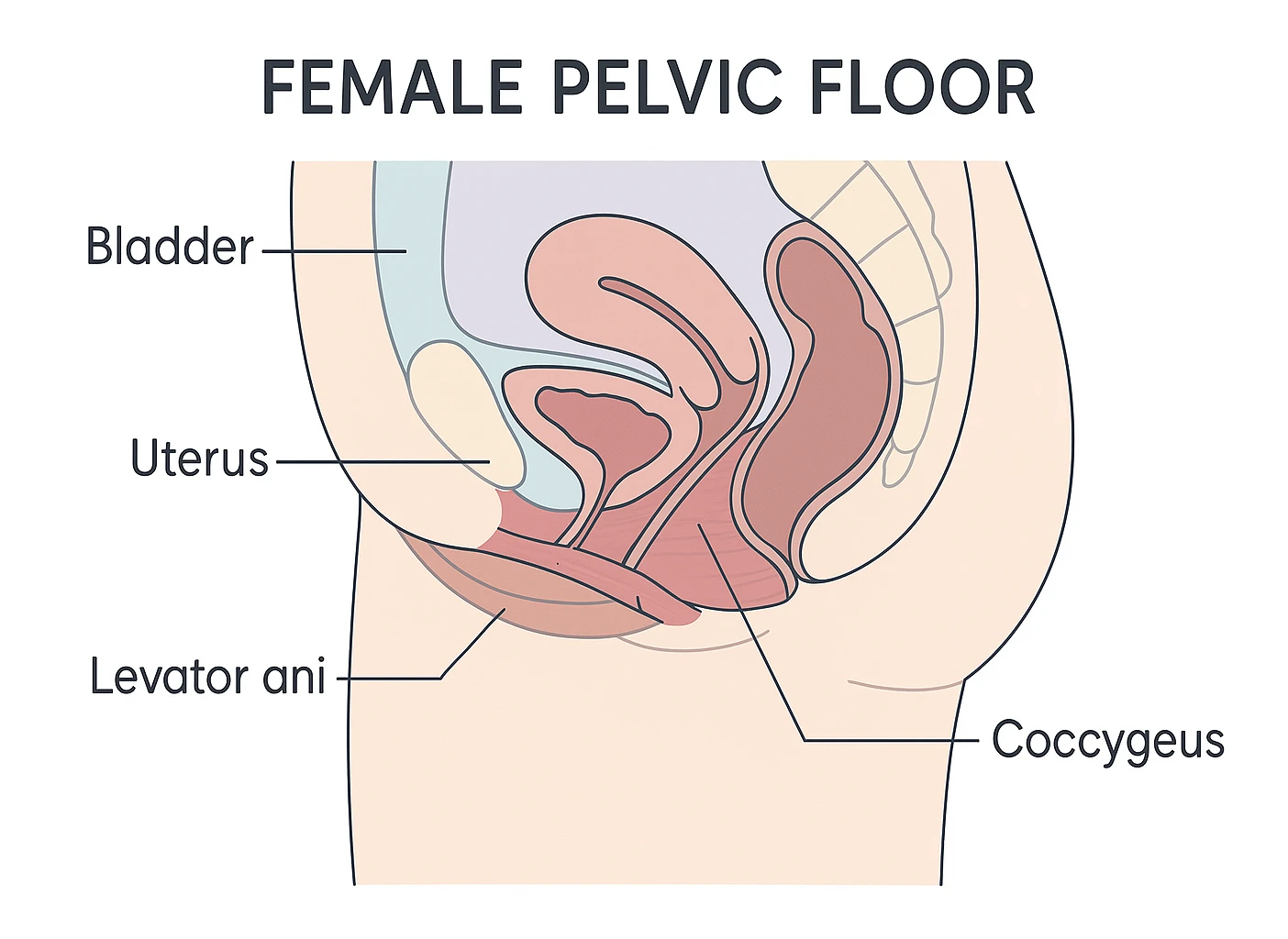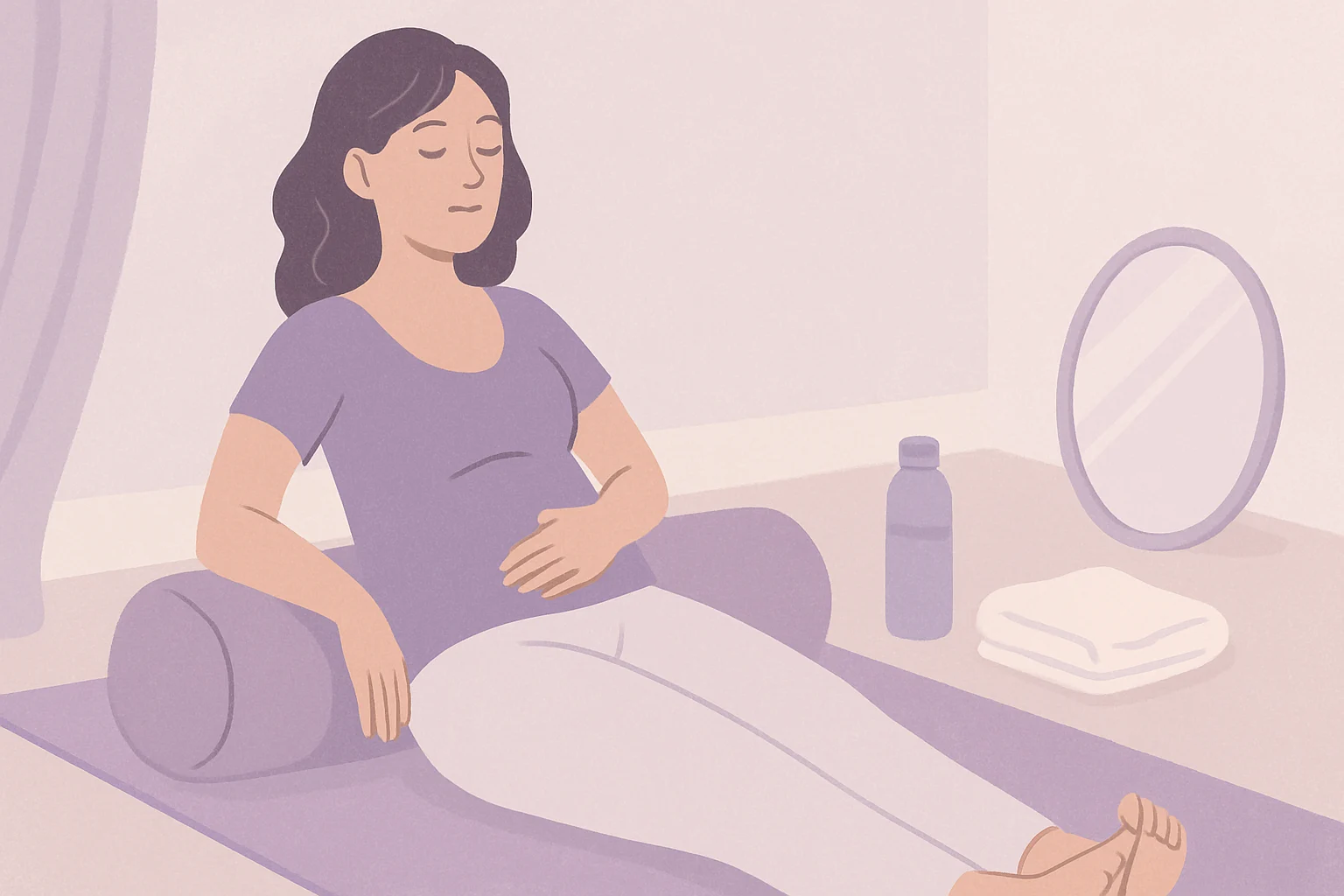
Struggling with pelvic pain or postpartum discomfort? Looking for gentler relief? Pelvic floor massage techniques may help you unwind tight muscles, one soothing step at a time.
The pelvic floor, a vital group of muscles forming a supportive hammock at the base of your pelvis, plays a critical role in bladder and bowel control, sexual health, and organ support. When these muscles become tight, weak, or painful, they can contribute to discomfort, incontinence, or pain during intimacy. Gentle, massage-based approaches may help restore balance and support women’s wellness. For a broader overview of how massage fits into women’s pelvic health, read on.
In this guide, we’ll explore what the pelvic floor is, why pelvic floor massage can be supportive for women, and how to safely practice these techniques at home or with professional guidance. You’ll gain practical steps to ease tension, improve well-being, and reconnect with your body.
Explore Pelvic Floor Massage Now!Table of Contents
- Key Takeaways: Pelvic Floor Massage
- What Is the Pelvic Floor? Pelvic Floor Massage Techniques 101
- Why Use Pelvic Floor Massage for Women?
- When Is Pelvic Floor Massage Recommended?
- Is Pelvic Floor Massage Right for You?
- Preparing for Pelvic Floor Massage
- Understanding Pelvic Floor Anatomy
- Self-Applied Pelvic Floor Massage Techniques
- Professional Pelvic Floor Massage Guidance
- Tips for Safe and Effective Pelvic Floor Massage
- When to Seek Professional Help
- Frequently Asked Questions

Key Takeaways: Pelvic Floor Massage
Pelvic floor massage techniques may help you relax tight muscles and feel more comfortable in your body.
- Core Support: The pelvic floor supports organs, helps control bodily functions, and may influence sexual comfort.
- Massage Benefits: These approaches may help ease pain, support circulation, aid postpartum recovery, and enhance body awareness.
- Safety First: Consult a healthcare provider or pelvic floor physical therapist (PFPT) before starting, especially with pain or medical conditions.
- Self-Care: Learn gentle external and internal techniques, focusing on light pressure and steady breathing.
- Professional Help: A PFPT offers tailored guidance for specific needs, helping you stay safe and consistent.
This post has affiliate links. We may earn a commission. Learn more.
What Is the Pelvic Floor? Pelvic Floor Massage Techniques 101
Picture a flexible, muscular hammock stretching from your pubic bone to your tailbone and between your sit bones. That’s your pelvic floor. Specifically, it supports your bladder, bowels, and uterus, influences urination and bowel movements, can affect sexual comfort, and stabilizes your spine and pelvis. When these muscles are overly tight, weak, or uncoordinated, issues like pelvic pain, painful sex, incontinence, or postpartum challenges may arise.
Common Pelvic Floor Issues
- Pelvic pain or discomfort
- Pain during intercourse (dyspareunia)
- Urinary or fecal incontinence
- Difficulty with urination or bowel movements
- Postpartum recovery challenges
- Lower back pain
Why Use Pelvic Floor Massage for Women?
Think of it like easing a tight shoulder — pelvic floor massage for women may help release tension in pelvic muscles and support everyday comfort. By addressing muscle spasms and trigger points, these techniques may offer benefits, particularly for women seeking relief from chronic pain or postpartum recovery.
Benefits of Pelvic Floor Self-Massage
Pelvic floor self-massage helps you build awareness, soften tension, and feel more at ease with your body’s signals.
- Pain Relief: May help ease chronic pelvic pain, dyspareunia, or discomfort from conditions like endometriosis, with professional guidance.
- Tension Release: Can relax muscles that hold stress, especially during high-anxiety periods.
- Improved Circulation: May enhance blood flow, supporting tissue health and healing.
- Scar Tissue Relief: May help soften and desensitize scar tissue from childbirth or surgery.
- Body Awareness: Helps you understand and connect with your pelvic muscles.
- Enhanced Sexual Comfort: May reduce pain and improve comfort during intimacy.
- Postpartum Support: May aid recovery by easing swelling and supporting muscle function.
“Think of these techniques as a gentle conversation with your body, encouraging your muscles to relax and release stored tension.”
When Is Pelvic Floor Massage Recommended?
Pelvic floor massage techniques may be recommended for certain concerns. For example, they may help you manage symptoms associated with chronic pelvic pain, vaginismus (involuntary vaginal muscle tightening), or postpartum recovery. Additionally, these techniques may help with muscle tension linked to conditions like endometriosis or fibroids, though they don’t directly treat these conditions. For those exploring intimacy post-recovery, our guide on resuming intimacy after childbirth complements these techniques.
Specific Conditions Benefiting from Massage
- Vaginismus: Gentle work may help relax tight vaginal muscles and ease penetration discomfort.
- Endometriosis: May help reduce muscle guarding that contributes to pelvic pain.
- Postpartum Recovery: With medical clearance, may support softening of scar tissue or easing swelling after childbirth.
- Urinary/Fecal Urgency: May help when overactive PF muscles are involved.
- General Stress: May release tension held in the pelvic muscles.
For more information on pelvic floor health, see MedlinePlus: Pelvic floor muscle training (Kegels).

Is Pelvic Floor Massage Right for You?
Before starting these techniques, it’s crucial to ensure they’re safe for your situation. Always consult a healthcare provider or pelvic floor physical therapist (PFPT) to diagnose underlying issues and confirm appropriateness, especially if you experience pain or have medical conditions.
When to Avoid Pelvic Floor Massage
- Active infections (e.g., UTI, yeast infection)
- Unexplained vaginal bleeding
- Recent pelvic surgery or acute injury
- Severe pain that worsens with touch
- Skin conditions or open sores in the pelvic area
- History of trauma without therapeutic support
If you notice red-flag symptoms (fever, severe bleeding, new numbness/weakness), or pain that doesn’t improve, stop and contact your clinician for an evaluation.
Prioritizing Comfort and Emotional Safety
Your comfort is paramount, especially for internal massage. If you have a history of trauma, consider working with a trauma-informed therapist or PFPT. Always listen to your body — gentle discomfort can be normal, but sharp pain is a cue to stop. Ultimately, give yourself permission to move slowly and choose what feels safe.
Preparing for Pelvic Floor Massage
Proper preparation enhances the effectiveness and comfort of pelvic floor massage. Here’s how to set up for success:
- Create a Relaxing Environment: Choose a private, quiet space with dim lighting or calming music.
- Maintain Hygiene: Wash hands thoroughly and ensure fingernails are short and smooth.
- Gather Tools: Use water-based lubricant (avoid oil-based with silicone tools) and a handheld mirror for visibility. Optionally, a pelvic wand can be used under professional guidance.
- Choose a Position: Try lying on your back with knees bent, side-lying, squatting, or sitting on a chair’s edge.
- Practice Diaphragmatic Breathing: Inhale deeply, letting your belly rise and your pelvic support muscles relax; exhale slowly, imagining a gentle lift.
Understanding Pelvic Floor Anatomy
To perform pelvic floor massage effectively, a basic anatomy refresher helps. The pelvic floor is a bowl-shaped muscle group, including the levator ani (supporting organs and controlling openings) and coccygeus muscles (near the tailbone). These muscles also interact with your diaphragm and core, forming a supportive network for pelvic stability.
Interactive Pelvic Floor Massage Tool
This tool helps you identify safe zones for pelvic floor massage techniques. Select a pelvic floor area to see guidance on whether it’s suitable for self-massage.
Select a zone to see guidance on safe pelvic floor massage techniques.
Self-Applied Pelvic Floor Massage Techniques
Ready to try pelvic floor self-massage at home? Start gently, use ample lubricant, and pause if you feel sharp pain. Below, we outline beginner-friendly external and more advanced internal techniques, which you can complement with devices like those in our 2025 pelvic floor device guide.
External Pelvic Floor Massage
For newcomers, begin with external work. In the first sentence below, we’ll reference these techniques to ground you in the steps.
External pelvic floor massage techniques are ideal for beginners or those hesitant about internal massage. They target accessible areas like the perineum and surrounding muscles.
1. Perineum Massage
The perineum — the tissue between the vaginal opening and anus — often holds tension, especially postpartum.
- How to: In a semi-reclined or squatting position, apply water-based lubricant to your thumbs or index fingers. Gently press on the perineum, moving in a U-shape or small circles. Stretch downward toward the sit bones, syncing with relaxed breathing.
- Benefits: May ease postpartum tension, help prepare for childbirth, and promote relaxation.
2. Inner Thigh and Gluteal Massage
Inner thigh and glute muscles connect to the pelvic muscles, so tension here can influence pelvic comfort.
- How to: Use your hands, a foam roller, or a massage ball to gently knead inner thighs from knee to groin. For glutes, sit on a tennis ball, rolling over tender spots and holding pressure briefly.
- Benefits: May release referred tension and improve mobility.

Internal Pelvic Floor Massage
When you’re ready, you can explore internal work. We’ll reference pelvic floor massage here too so you know you’re on the right track.
Internal techniques involve inserting a finger into the vagina to access pelvic floor muscles directly. Important: only attempt these after consulting a PFPT and ensuring your comfort.
Trauma-informed care matters: you can pause or stop at any time, choose positions that feel safe, and work with a PFPT trained in trauma-informed approaches. Learn more from APTA Pelvic Health.
Preparation for Internal Massage
- Relax with deep breaths, softening your jaw and shoulders.
- Use ample water-based lubricant on your finger and vaginal opening.
- Choose your thumb or index finger, ensuring nails are smooth.
1. Gentle Exploration and Mapping
This technique builds awareness of your pelvic floor’s anatomy.
- How to: Insert a lubricated finger 1–2 inches into the vagina. Sweep along the walls, imagining a clock: 12 o’clock (pubic bone, gentle), 3 and 9 o’clock (side walls), 6 o’clock (perineum). Note tight or tender spots.
- Benefits: Helps identify trigger points for targeted relief.
2. Sustained Pressure on Trigger Points
Ease tight, knotty spots in your pelvic floor to support muscle relaxation.
- How to: Find a tender area and gently press with light to moderate pressure (think 3–5 out of 10 on discomfort). Hold for 30–90 seconds, breathing deeply to help the muscle soften.
- Benefits: May calm muscle spasms and reduce tightness.
3. Gentle Stretching and Lengthening
Gently stretch your pelvic floor muscles to encourage flexibility and ease tension.
- How to: Softly press on a tight spot, then slowly stretch it outward or sweep along the muscle fibers to lengthen them, staying within your comfort zone.
- Benefits: May enhance muscle range of motion.
4. Hook and Release (Advanced)
This advanced technique is often taught by PFPTs for stubborn muscle knots.
- How to: Locate a tight muscle band on the vaginal side walls. Gently curl your finger around it, pulling slightly toward the vaginal center for a few seconds, then release.
- Benefits: May help release deeper tension; best learned from a professional.
Professional Pelvic Floor Massage Guidance
Self-massage can be empowering, but a pelvic floor physical therapist (PFPT) brings tailored care — especially helpful with pelvic floor massage for women who need extra guidance. They can assess your symptoms, individualize techniques, teach proper methods, and, when appropriate, use therapies like biofeedback or dry needling.
Tips for Safe and Effective Pelvic Floor Massage
- Start Gently: Begin with 5–10 minute sessions, 2–3 times weekly, increasing as comfortable.
- Use Lubricant: Apply ample water-based lubricant to prevent friction.
- Breathe Deeply: Use diaphragmatic breathing to help muscles relax.
- Listen to Your Body: Stop if you feel sharp pain; gentle discomfort can be okay, but pain isn’t.
- Stay Consistent: Regular, gentle sessions are usually more helpful than intense ones.
- Hydrate: Drink water before and after sessions.
- Post-Massage Care: Try a warm bath or heat pack for added comfort.
When to Seek Professional Help
If you’re struggling with persistent pain, not feeling better after regular self-massage, noticing new symptoms, unsure about your technique, or feeling emotionally uneasy, connect with a pelvic floor physical therapist (PFPT). They’ll craft a plan just for you, making sure your approach feels safe and workable.
Frequently Asked Questions
Conclusion: Your Path to Pelvic Wellness
Your pelvic floor is a key part of your body, but it’s often ignored until something feels off. By exploring pelvic floor massage techniques — and trying supportive options like pelvic floor self-massage — you may soothe tension, support balance, and feel more connected to yourself. Move slowly, listen to your body, and reach out to a therapist if you need expert guidance. With gentle steps, you can build comfort and confidence, perhaps pairing these techniques with practices like those in our intimacy exercises for women and couples.